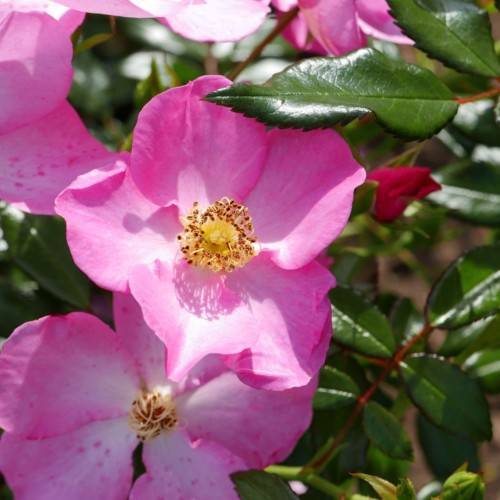
floribunda rose
Rosa 'Nearly Wild'
Cycle:
Perennial
Watering:
Average
Hardiness Zone:
4 - 9
Flowers:
Flowers
Sun:
Full sun,part shade
Leaf:
Yes
Growth Rate:
Low
Maintenance:
Moderate
Drought Tolerant:
Yes
Thorny:
Yes
watering
Rosa 'Nearly Wild' should be watered once a week in the summer and every other week in the spring and fall. During the winter you can water less and once a month should suffice. When watering, be sure to provide enough moisture that reaches the lower layers of soil, about 1 to 2 inches of water. If the weather is particularly hot, you may need to water more during the summer months. Letting the soil dry out before re-watering will help promote strong root growth. Avoid over-watering as this can cause root rot.
sunlight
The floribunda rose (Rosa 'Nearly Wild') requires at least 6 hours of direct sunlight per day to thrive. Ideally, the sun should be at its peak midday, with exposure to morning and mid-afternoon sun also beneficial. Planting in an area that gets full sun in the morning and late afternoon is ideal for this species. In areas of low light, the rose will struggle to bloom, whereas subsequent growth will be weak and sparse.
pruning
Floribunda roses (Rosa 'Nearly Wild') should be pruned at least once a year, usually in late winter while they are dormant. Start by removing any dead or diseased canes and any crossing or weak-growing canes. Then cut back the remaining canes by about 1-third. Make the cuts at a 45° angle just above an outward facing bud. Follow the natural shape of the rose bush as you prune, and prune the tallest canes first. Finally, remove any basal sprouts that may have developed at the base.
